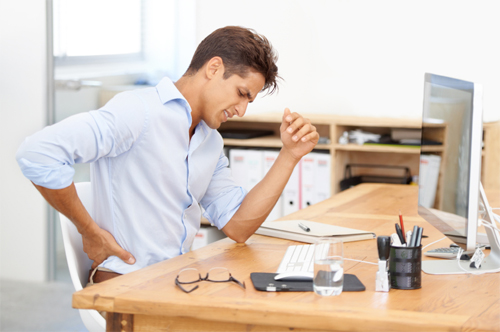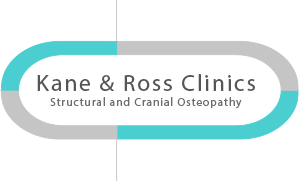Reducing neck and back pain symptoms for office based workers
Posture related neck, headache and back pain are common symptoms that we see as osteopaths at Kane & Ross Clinics, particularly those patients who are sitting for many hours either at a PC, laptop or tablet.
Pain results from the muscles in the neck, shoulders and back getting over-tired as they’re not held in their most natural position. Waste products build up as the muscles are over stretched or shortened and an alteration to the blood flow in the muscle occurs leading to aches and pains.
These symptoms can be helped through osteopathic treatment, exercise and good ergonomic advice.
Even if the workplace provides the option for a work station assessment, it is essential that you sit in your chair in the most supportive way – otherwise neck and back pain symptoms are likely to persist.
Advice on how you can help prevent these posture related pain
– Sit in a supportive office chair with your knees bent at 90 degrees with both feet flat on the ground. Elbows should be bent at 90 degrees with the forearms supported by the desk height. Alter the chair height to accommodate these angles. If your feet do not then touch the floor then use a foot rest to support your lower limbs with the feet flat (avoid angled foot rests). Tilt the base of the chair forward so that your knees are below your hips.
– ensure you sit upright up against the back of the chair with a good lumbar support avoiding slumping the shoulders forward and tucking your chin in
– sit evenly on both buttocks do not cross your legs.
– ensure your computer screen is at eyebrow height, if you are using more than one screen use a plastic mat under your chair and that your main computer screen is directly in front of you. If you can use less screens, do.
– If you use a laptop, use an external keyboard and mouse and place your laptop screen at eye level on a screen stand.
– If you use a tablet users, take regular breaks every 30 minutes and avoid using when sitting in bed / sofa and stand on a table / desk.
– For all desk workers, we recommend taking regular breaks every 30 minutes.
– If you have headaches, neck pain or back pain, get a diagnosis , so that you can find out what the specific problem is and how to deal with it.

